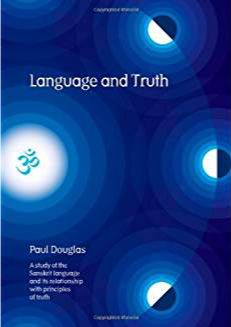This is effectively Part 6 1/2 of 10 in the pratibandha series. It follows on from the heading of “The ‘mixture of Atman and mind’”. Apologies for the misleading and changing part numbers. This is the result of writing ‘as I go’ rather than completing the entire topic first.
xi) AbhAsa vAda
This theory was mentioned briefly above in 2b, when bhAmatI and vivaraNa were discussed in the context of sources for mistaken views of Advaita. AbhAsa translates as ‘fallacious appearance’ and it is effectively the term that is used to describe this ‘mixture’ of Consciousness and intellect. Shankara addresses this in his upadesha sAhasrI, principally in chapter 18 ‘tat tvam asi’. The following analysis is with the help of Ref. 211.
As the chapter heading indicates, the topic is the mahAvAkya and how the knowledge of its truth is all that we need in order to gain enlightenment. We are already free and always have been, so once we realize this, there is nothing more that needs to be done. The idea that, after gaining ‘merely intellectual knowledge’ from shravaNa, we have somehow to gain ‘direct experience’ of Brahman before we are liberated, is called prasa~NkhyAna vAda. This is discussed and rejected in detail below, under the topic of ‘meditation’ but in this chapter Shankara introduces an objector who has these notions and the subsequent arguments are relevant to this topic of pratibandha-s. Continue reading

 We shall present in this Part – 2 how the word samAdhi is used in Yogavasishta (Yogavasishta is available as a pdf at this site). The word samAdhi occurs very ubiquitously in this text. It is used both in its Yogic and Advaita Vedanta meaning. A few select citations are illustrated below.
We shall present in this Part – 2 how the word samAdhi is used in Yogavasishta (Yogavasishta is available as a pdf at this site). The word samAdhi occurs very ubiquitously in this text. It is used both in its Yogic and Advaita Vedanta meaning. A few select citations are illustrated below. samAdhi is a highly specialized term in Yoga and also in Vedanta. However, paradoxically, the word does not stand to convey the same ‘concept’ in a rigid and fixed manner in all its occurrences across different scriptural texts. Like all other Sanskrit words in the scriptures, the word attains a lot of fluidity and delicate malleability in the hands of the Sages and ancient authors to convey a very precise and what is otherwise inexpressible philosophical idea. Such flexibility in the use of technical words is unknown and unimaginable in the West, particularly so if one is trained in the modern science. Therefore, it is important to bear in mind that one cannot nail the meaning of the word as per one single definition when comparing its usage across different texts by different authors of different times. ‘anubhava’ and ‘anubhUti’ usually rendered into English as “experience,” often used in association with samAdhi, is another such word that needs care in handling.
samAdhi is a highly specialized term in Yoga and also in Vedanta. However, paradoxically, the word does not stand to convey the same ‘concept’ in a rigid and fixed manner in all its occurrences across different scriptural texts. Like all other Sanskrit words in the scriptures, the word attains a lot of fluidity and delicate malleability in the hands of the Sages and ancient authors to convey a very precise and what is otherwise inexpressible philosophical idea. Such flexibility in the use of technical words is unknown and unimaginable in the West, particularly so if one is trained in the modern science. Therefore, it is important to bear in mind that one cannot nail the meaning of the word as per one single definition when comparing its usage across different texts by different authors of different times. ‘anubhava’ and ‘anubhUti’ usually rendered into English as “experience,” often used in association with samAdhi, is another such word that needs care in handling.